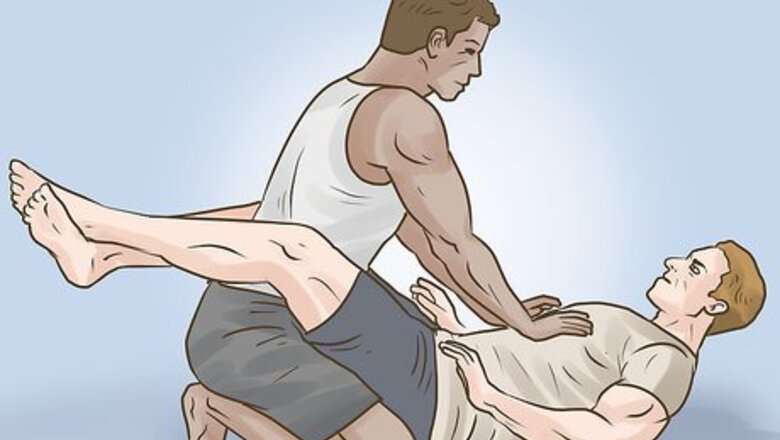
views
Pulling a Kimura from the Guard
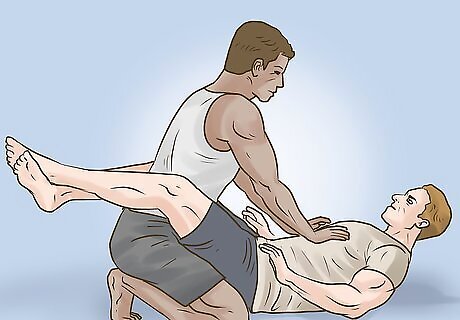
Begin from a closed guard. Your opponent will be in your guard, meaning you'll be on your back with you legs wrapped around their waist. Push your hips forward while keeping your torso straight to restrict their movement. From the guard, you'll have access to both arms, which will leave them vulnerable to an unexpected submission. The kimura is an excellent defensive submission that can be secured just as easily from the bottom as from the top. Make sure you're on the lookout for submission attempts yourself while searching for an opening.
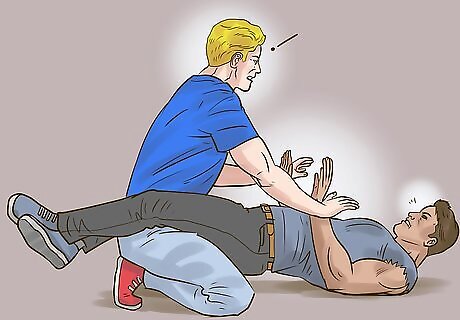
Initiate a sweep. Sit up quickly and scoot your hips back. This will fool your opponent into thinking you're going to try to throw them off balance. They'll instinctively plant their arms to brace themselves, allowing you to capitalize. If your sweep attempt works, you'll have successfully escaped from the guard and can begin scrambling for a stronger position.
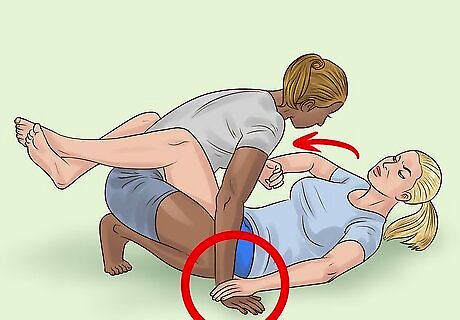
Take hold of your opponent's arm. As you sit up, begin reaching your dominant hand up and over your opponent's opposite shoulder. Meanwhile, clutch their wrist with your hand on the same side. Wind your top hand around the back of their arm, then grab the wrist of your bottom hand. When targeting your opponent's right arm, you'll grab their right wrist with your left hand. To apply the submission to their left arm, grab their left wrist with your right hand. Try not to give away your intentions by reaching for an arm too early. Once your opponent knows what to look for, you'll have a much harder time setting up the submission.
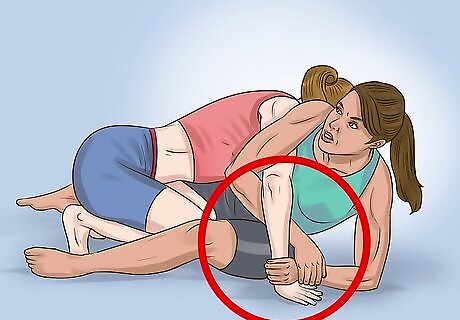
Free your hips. Now that you've got control of your opponent's arm, uncross your legs and slide your hips to the side. You'll need to create some space to get into a better position to torque the arm. Keeping the arm tight to your chest, scissor your legs around your opponent's waist once again to hold them in place. Make sure you turn to the same side that the opponent's arm is on. Proper hip distance and placement is key to pulling off a kimura from the guard.
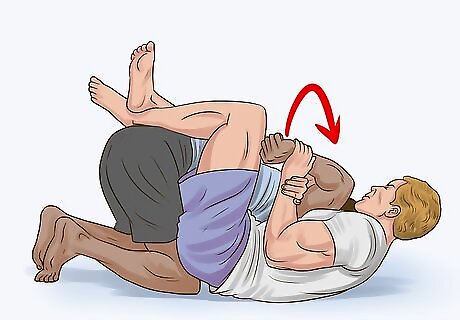
Twist the opponent's wrist toward their head. Push your bottom hand (the one holding their wrist) forward to rotate the opponent's arm. Doing this will put pressure on the shoulder joint. If you're in a solid enough position, the opponent will have no choice but to tap out. Don't wrench or tug at the arm. The rotation of the shoulder should be done in one smooth motion.
Pulling a Kimura from Side Control
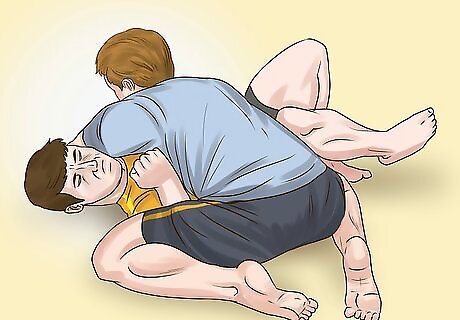
Start in side control. In side control, you'll be lying across your opponent, keeping your body weight pressing down on them. Clamp your knees against your opponent's side to restrict their movement. From there, reach around their opposite shoulder and clasp your hands together. This will prevent them from squirming out. Since you'll already be controlling your opponent's arm to maintain side control, you'll be in a perfect position to secure a kimura. Be prepared to adjust your technique depending on which side you're controlling—grip your opponent's right wrist with your left hand and vice versa.
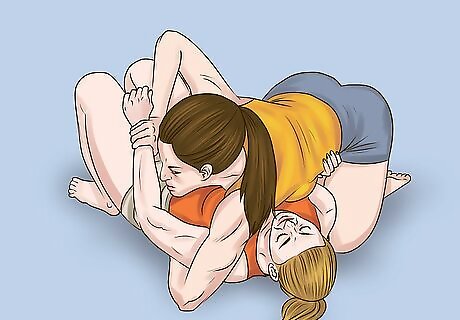
Grab your opponent's arm. In dominant side control with your opponent on their back, securing an arm will be as simple as reaching down and grabbing it with your bottom hand. If they're attempting to escape, you'll have to first flatten them out. You can do this by angling your legs toward their head and driving your weight forward until both of their shoulders are on the mat. If your opponent is braced and pushing against your chest, quickly take hold of their wrist before you flatten them out. This will make it easier to complete the submission once they're on their back. Be careful not to let your opponent slip out or turn over onto their knees while you're setting up the leg drive.
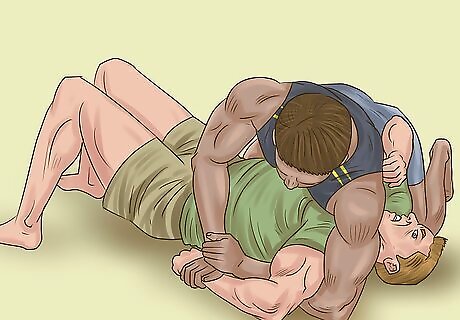
Lock on the kimura. Now that you're controlling your opponent's wrist, snake your top hand around the back of their upper arm and grip your own wrist. To put yourself in a stronger controlling position, step over the opponent's head with your nearest leg, drop your weight and turn so that you're facing their feet. Twisting the wrist so that the palm is facing upward will take away your opponent's leverage. Keep your knees pulled in tight. Otherwise, your opponent may turn inward, neutralizing the submission.
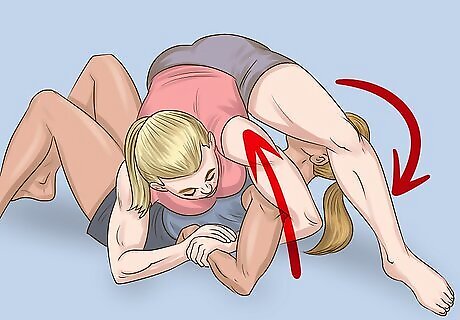
Pull the opponent's elbow up toward the ceiling. Hugging the arm tight to your chest, use the forearm of your top hand to lift straight up on the elbow. You should pull with the full strength of both arms, not just your top hand. Imagine that you're trying to pinch your shoulder blades together. The submission will work best if there's a little bend in the arm. If it's completely straight, you'll have apply much more rotational force in order to tap the opponent out.
Pulling a Kimura from Full Mount
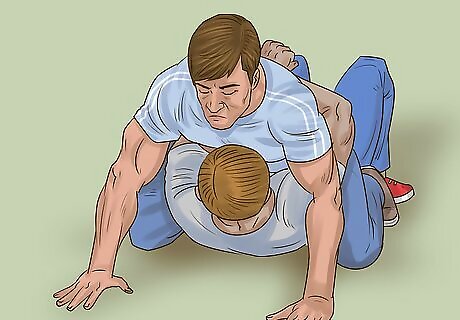
Assume the full mount. Work your way into a mount position, straddling your opponent with both legs. You weight should be centered over your hips to keep them from being able to sweep you or otherwise free themselves. Sliding your knees up into their armpits will also help make your mount more stable. The mount is a less common position to apply the kimura from than the guard or side control, but it can be a useful variation to learn nonetheless. In addition to the kimura, a full mount will set you up to perform a variety of submissions, including the americana, guillotine choke or arm triangle.
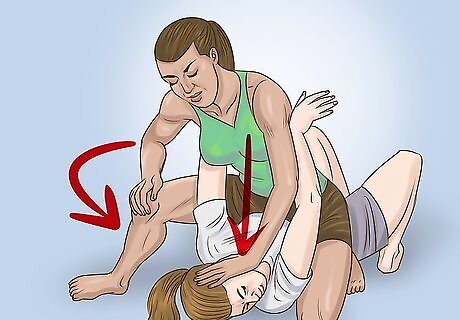
Slide forward to extend your opponent's arms. The higher up on your opponent's body you are, the more they'll be forced to reach to defend. If you can catch hold of one of their arms while they're struggling for an escape or reversal, you'll be able to score a kimura without altering your position. Lean your upper body forward and pull your knees up toward your shoulders, keeping your center of gravity low. If the opponent has their arms around your midsection to defend against strikes or submissions. you can break their grip by taking a step forward on one knee and pushing down on their head with your free hand.
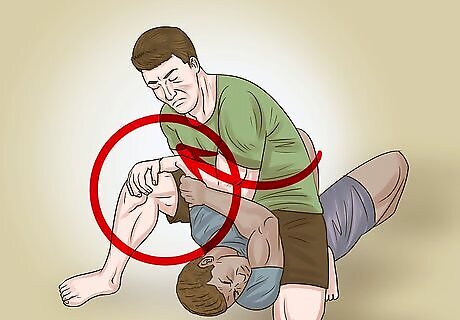
Trap your opponent's arm. While maintaining your base squarely over your opponent's chest, use your elbow to pin their arm to your side. Then, turn your upper body slightly to take hold of their wrist with your same side hand. Loop your opposite hand around the back of their arm and clutch your own wrist in the familiar kimura technique. Be careful not to lose top control while turning to grab their wrist.
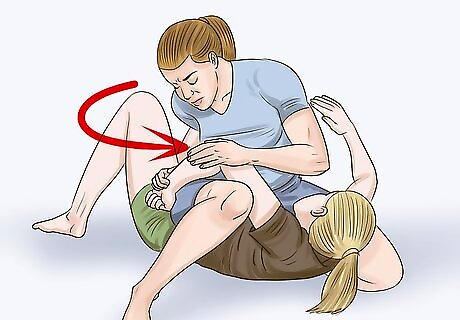
Twist to apply pressure to the shoulder. Keeping the arm tight to your chest, crank the opponent's wrist in the direction of their head. Because of your superior positioning, it won't take much force to make them submit. Unlike other positions, finishing the kimura from the mount is more about rotating your shoulders than pulling with your arms. Step over and hook your opponent's head with your opposite leg to gain even more leverage.



















Comments
0 comment